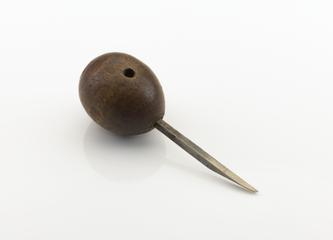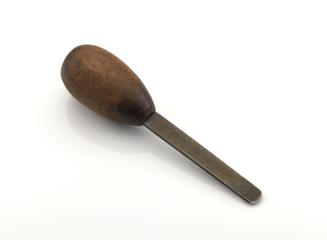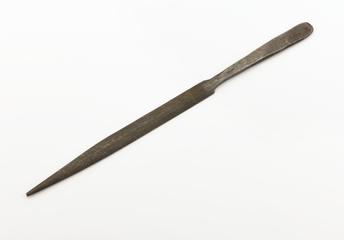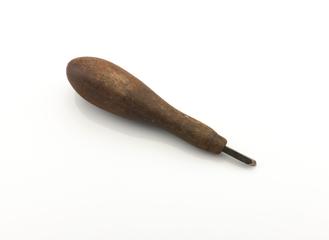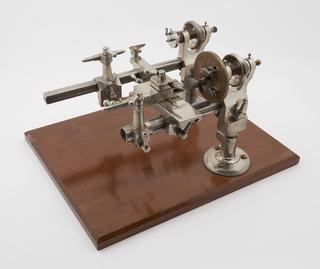
2 watchmaker's lathes
2 watchmaker's lathes, Lorch type, on wooden base with a large quantity of accessories in box, also stand for box
General turning for watches and clocks was originally performed on 'turns', or 'turn-benches', but since about 1870 the ordinary lathe in miniature has been developed. Thes two specimens are similar to those made by Messrs Lorch, Schmidt & Co, of Frankfurt.
The lathe beds are formed from a round bar, with a flat on one side; headstocks, tailstocks, and tool rests are fitted on this and secured by clamping screws; the headstock has a projection below, which may be held in a vice or in an adjustable foot screwed to the bench. One of the lathes has a fast headstock with a three-speed cone pulley, division circle, and index; while the mandrel is hollow, and chucks, arbors, etc, are held in its nose by a hollow draw-in spindle. The headstock of the other lathe has a mandrel to which a faceplate with three dogs is permanently attached: these dogs work in curved slots and may be clamped in any position so as to hold a plate eccentrically; a sliding conical point is fitted in the mandrel for centring the work, and sight holes are provided through the faceplate for observing it. The tailstocks have cylindrical barrels, in which different centres or runners may be clamped. A compound slide-rest is provided, as well as two T handrests and a roller-rest for filing. One of the tailstock runners consists of a hollow spindle with an arm at the inner end; this arm is provided with a hole in which the stems of centring and drilling plates are clamped; these plates have conical holes in which the end of the work is placed, while one has holes partly parallel, to serve as guides for the drills, which are secured in a holder sliding inside the spindle. A pivot-forming appliance also fits on this runner; it consists of a disc with a number of flats on its edge, in each of which is formed a longitudinal groove. The end of the pivot is laid in one of the grooves, the other end being driven, and filed down until it sinks into the correct groove, the flat face acting as a guide to the file. Behind each groove is a centre dot, by means of which a centre pin, passed through the hollow runner, sets the disc correctly. Another runner with a tapered hole serves to hold any of the sinking cutters, drill holders, or plates shown; there is also one with a sliding drill holder operated by a lever. A set of small drills is included. When turning work between centres, an arbor with a driver plate and an adjustable arm for the carrier pin is fitted to the headstock; for lighter work small carrier pulleys revolving on dead centres are fitted to either head to tail stock; a set of 10 small carriers of the ordinary shape, but of very small size, is provided. A large number of pointed arbors, with pulleys fixed on them, are used for mounting work between dead centres. For supporting work on the headstock an independent four-jaw chuck is used, and also an eight-screw bell-chuck, a set of 20 split chucks from mm to 5 mm diam., a set of five split step chucks for barrels. etc, and a set of chucks to which to cement the work. There are arbors for carrying circular saws, emery wheels and wooden chucks.


